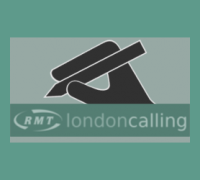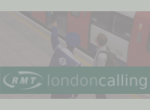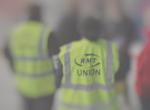Today marks the 150th anniversary of the first London Underground line. The first line opened on January 10 1863, between Paddington and Farringdon as envisaged by Charles Pearsen. Briefly an MP for Lambeth, Peasons proposal was "to facilitate the improvement of the social conditions of City workers by enabling them to commute into London on cheap trains from new residential developments of good quality, cheap homes built outside the capital."
The first day saw around 30,000 passengers; the first year there were nearly four million journeys - around four times the population of London at the time.
One of the big problems for the tube at the time was competing companies running lines. This meant some very poor service: for example what is now the Circle line saw two companies running trains in opposite directions, and separate tickets needed for each. Badly planned connections such as the two Hammersmith stations, or stations were they weren't needed - many combined or the 40 now closed - were another result.
 Metroland
Metroland
As lines extended into the countryside, they saw villages become large towns. The 'Metropolitan Railway' was in a unique position of owning surplus land and advertised this as Metro-Land selling it off to builders and producing an annual booklet saying such things as "Each lover of Metroland may well have his own favourite wood beech and coppice — all tremulous green loveliness in Spring and russet and gold in October" in order to encourage people to build homes in the area.
A similar story was seen in other places. The Northern line reached Edgware in 1924 - a village of around 1500 at the time. In the three decades to follow population was nearly twelve times the size.
As a result of new technology in tunnelling new deep level tubes were built between 1890 and 1906. These were the lines which became the Piccadilly, Bakerloo and Central lines and Northern Line. Initially these new lines were mostly owned separately. Inconvenient to use and short on funds, several were bought out and eventually integrated notably by Charles Yerkes from the US. It was in this period that the remaining railway companies began to work more closely together promoting themselves as ‘the underground.’
By 1913 only the Metropolitan railway remained as a separate company from the now merged ‘underground’ railways. The Metropolitan line continued to class itself as a mainline railway and used its Metroland business as a way of differentiating itself.
A public railway
In 1933 the London Passenger Transport Board was set up and the Metropolitan Line and underground railways in London were at last amalgamated and largely nationalised. The LPTB saw massive extension to the network with the 'New Works Plan' seeing extensions to the Central, Bakerloo, Northern and Metropolitan lines; new trains and maintenance depots and rebuilding of many stations. London Transport was nationalised by the Labour government in 1948.
The New Works Programme also saw the introduction of ‘38 stock which initially ran on the Bakerloo Line. The last of these trains were in use until 1988, the fleet having operated on the Bakerloo, Northern, Piccadilly, East London and Central lines. A few are still in use today on the Isle of White; 75 years since they were first built.
The LPTB was replaced in 1948 by the London Transport Executive. The LTE initially had to organise the repair of stations and lines damaged by the war. They also oversaw the completion of electrification of many lines. One of the last to be electrified was the Central Line between Epping and Ongar which up until 1957 still had a shuttle service operated by steam train.
 In the early 1960’s the LTE introduced the A60’s to the Metropolitan Line - the longest running trains on the underground, only recently replaced in 2012. The LTE also began recruiting workers directly from Ireland and the Caribbean. At that time wages were relatively lower, with people able to find similarly paid work in light industry and other sectors for a similar wage. This meant direct recruitment was a necessity in order to fully staff the underground.
In the early 1960’s the LTE introduced the A60’s to the Metropolitan Line - the longest running trains on the underground, only recently replaced in 2012. The LTE also began recruiting workers directly from Ireland and the Caribbean. At that time wages were relatively lower, with people able to find similarly paid work in light industry and other sectors for a similar wage. This meant direct recruitment was a necessity in order to fully staff the underground.
A well unionised workplace, the tube has seen pay rises in line with or above inflation for many years. As industries which once paid similarly have seen wages drop in comparison the underground has become a place where more people want to work.
A new line
The Victoria Line was built between 1968 and 1971 making it the first new line for over 60 years and the first major post war investment.
Having avoided the decimation of railways by Beeching, what was by then the London Transport Board was taken over by the General London Council in 1970. The mid 70’s was seen as decade of poor investment and under staffing.
There was a resurgence of sorts in the early 80’s with the Labour led GLC reducing fares with their ‘Fares Fair’ scheme and increasing local tax to subsidise the underground. This saw a massive increase in usage, but a challenge by tory-led Bromley council a couple of years later saw an end to the scheme and the doubling of fares.
Towards the end of the 70’s the Jubilee line was created and extended, and the Piccadilly Line extended to Heathrow. One remaining part of ‘Fares Fair’ was the ticketing zones, still in use today and designed to simplify the pricing of tickets.
In 1984 London Transport was run by ‘London Regional Transport’ and London Underground began to run it’s own affairs - under control of the LRT. The plan was to modernise the tube and at the same time slash tax payer subsidies. It was in this period that the King’s Cross Fire claimed 31 lives. Local MP Frank Dobson claimed in parliament that the number of station staff had been reduced from 16 to ten and the number of cleaners from 14 to 2. The fire was blamed on a cigarette being dropped where the build up of rubbish in the wooden pannelled escalator was soon ablaze. After the incident new safety laws were brought in and calls made for greater investment.
The RMT continues to fight for improved safety standards and adequate staffing levels - more workers not less than the current number - as the results of an understaffed and unsafe railway have been seen too many times in tragic realism.
The Jubilee Line was again extended in 1999, said to have been rushed so as to be in operation for millenium celebrations at North Greenwich which it served. Original plans for it to be automated were dropped as they were taking too long to introduce and were overpriced, and a largely inadequate signalling system was used on the extended line until its eventual replacement in 2011.
The disaster of privatisation
The new millenium saw the creation of ‘Transport for London’, a directly elected mayor for London and the introduction of the ill conceived and largely disastrous ‘Public Private Partnership.’ PPI saw trains and stations maintained by privateers Tube Lines and Metronet, whilst the service and staffing was run by publicly owned London Underground.
Metronet collapsed in 2007 costing the tax payer £2 billion pound. Tube Lines was bought out by London Underground in 2010. PPP led to overpriced and late completion of upgrade works, something the RMT and many others warned of before the introduction of the scheme. This period has however seen renewed investment with major upgrade works either ongoing or planned across the underground.
At the same time, jobs have been under threat - with many ticket offices being closed, station staff being cut and the continued suggestion of trains in future being operated without drivers or even any staff on board at all. In an article in the Evening Standard to mark today’s anniversary, the tubes Managing Director Mike Brown made a call for a further £10 billion investment for replacement trains and again repeated that new trains would likely not have a drivers cab.
More articles on 150 years of London Underground
- The Green Wen - 150 years of the London Underground http://greatwen.com/2013/01/08/150-years-of-the-london-underground/
- The Guardian - The London underground: still the people's railway - http://www.guardian.co.uk/commentisfree/2013/jan/09/peoples-underground-...
- Blog: 150 Great Things About The Underground: http://150greatthingsabouttheunderground.com/
- rmtlondon's blog
- 5237 reads




